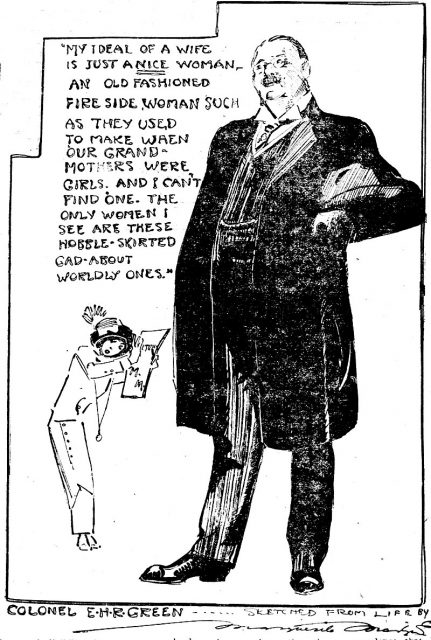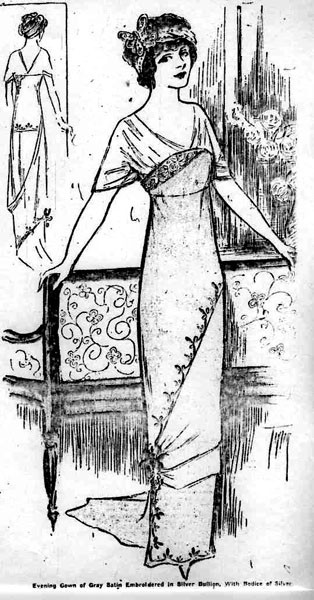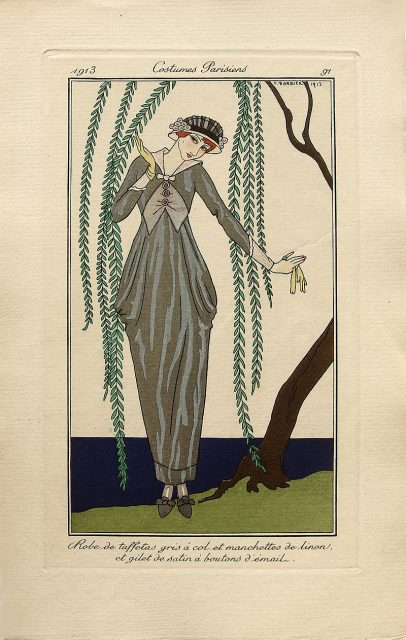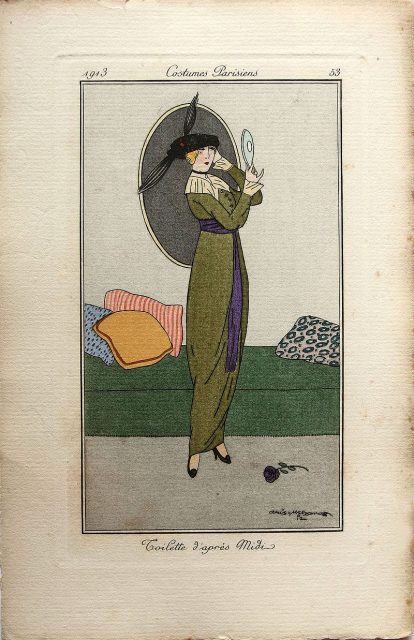Over the centuries, fashion has provided us with some very questionable trends — hoop skirts and clam-diggers come to mind.
But of all the fads, none boggle the mind quite as much as the hobble skirt.
This snug-fitting attire, which hugged the legs and cinched in at the ankles, was quite the craze from about 1910 to 1913.
(The name, by the way, comes from the term for binding a horse’s hooves together to keep it from running off.)

The Wright Brothers, of all people, took credit for this ill-conceived little number, claiming they unwittingly came up with the idea upon tying a string around a female passenger’s flapping skirt to keep it safe within the jumpseat of a plane.
French couturier Paul Poiret begged to differ, insisting he created the hobble skirt in 1908, for favored clients, to be worn without cumbersome petticoats or confining corsets. “Yes, I freed the bust, Poiret boasted, “but I shackled the legs.”

Yeah…about that. Chic though they might have been, hobble skirts were next to impossible to walk in. Instead of strides, women had to take tiny, mincing steps, not unlike a Japanese geisha (or Morticia Adams for that matter).
Nonetheless, copies of Poiret’s narrow skirts would find their way to America, just as the suffrage movement was gaining steam. Forward-thinking women, armed with more independence and eager to wear whatever they damn well pleased, were only too happy to embrace any look that allowed them to ditch their petticoats.
Though the skirts supposedly provided more freedom for early feminists, they were also lending credence to those who weren’t all that jazzed with the whole women’s rights thing. Newspapers were quick to pounce on any accident (Twisted ankles! Broken legs! Bruised Dignity!) involving hobble skirts.

A Chicago minister called them an abomination. Some employers forbade their female workers from wearing them.
The New York Times got all guilt-trippy with an overwrought editorial on the economic impact of a world without petticoats: “Think of that! Think of 10,000 people turned away from their possible means of livelihood, 10,000 families, perhaps, starving, just because women persist in following an ungraceful and immodest freak of fashion!”

Some took to the trend. The “older generation” applauded the hobble skirt, believing it would “… bring back to women the old grace. They will be compelled to shorten their strides, learn to place their feet in a straight line, and not throw them in or out in the slovenly modern way, and that the entire appearance of women will be thus benefited.”
But, ornery as ever, the press was having a field day, poking fun at the new craze with cartoonists taking digs at the struggles women faced trying to cross streets or climb into cars.

Embarrassed Parisian couturiers washed their hands of the whole affair and, in a nifty bit of revisionist history, insisted the trend was American in origin.
A New York Times writer huffed: “If women want to run for Governor, they ought to be able to run for a car…. If they want to be legally free they shouldn’t be sartorially shackled.”

“But with the lack of logic that the sex can be counted on to display they have chosen a trammelled figure and shackled ankles when they need most to have them free in the strenuous race for equality with the trousered sex.”
In 1912, someone took pity on those poor tottering women and tweaked the trend, incorporating hidden slits and pleats underneath the skirt to allow for more movement and (slightly) longer strides.
More good news: In 1914, to accommodate tight-skirted passengers, tramlines were equipped with “Hobble Skirt” cars (or Hedley-Doyle cars, named after their designers, Frank Hedley, Vice-President and General Manager of the New York Railways Company, and James S. Doyle, Superintendent of Car Equipment), with the entrances dropped to just eight inches from street level for easier access.
The hobble skirt hit the road in 1915. With the onset of World War I, this fashion footnote seemed a tad too frivolous and impractical for such a sobering, “Let’s roll up our sleeves!” time.
